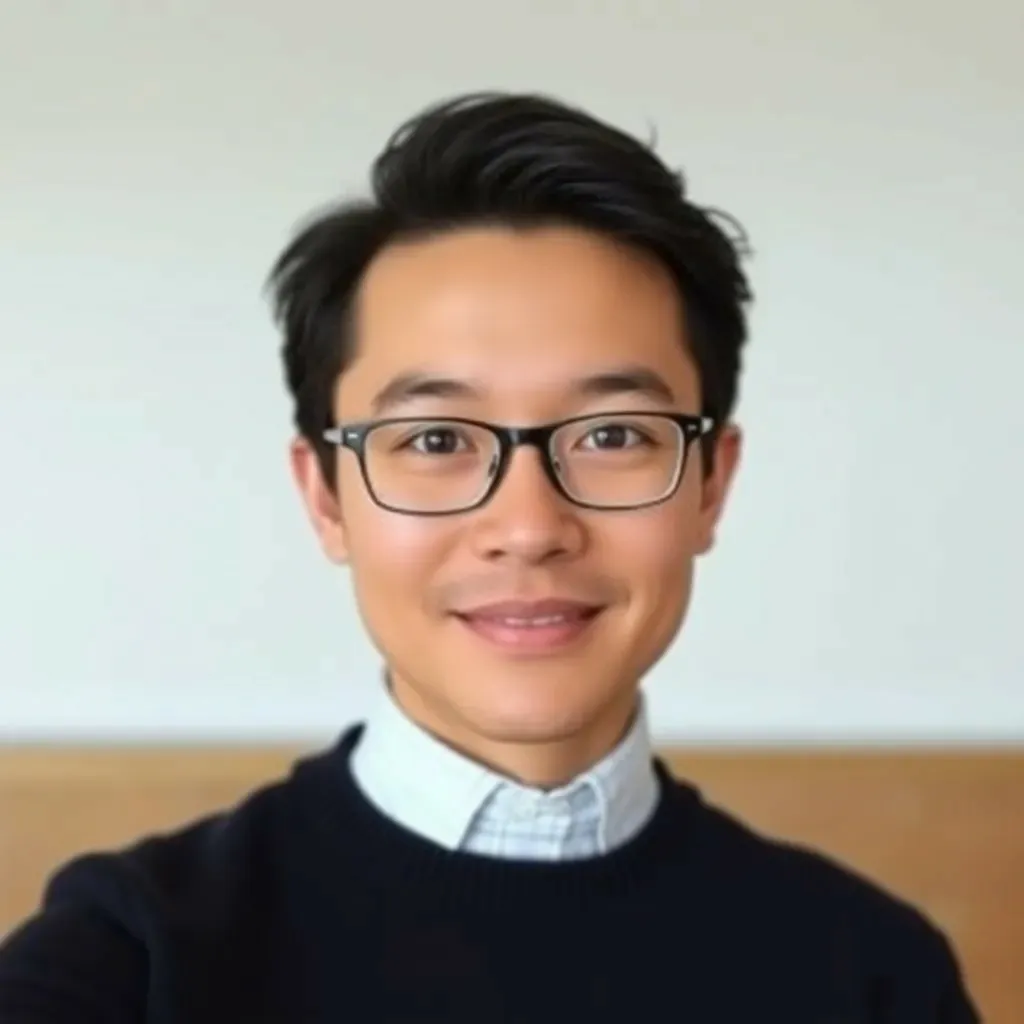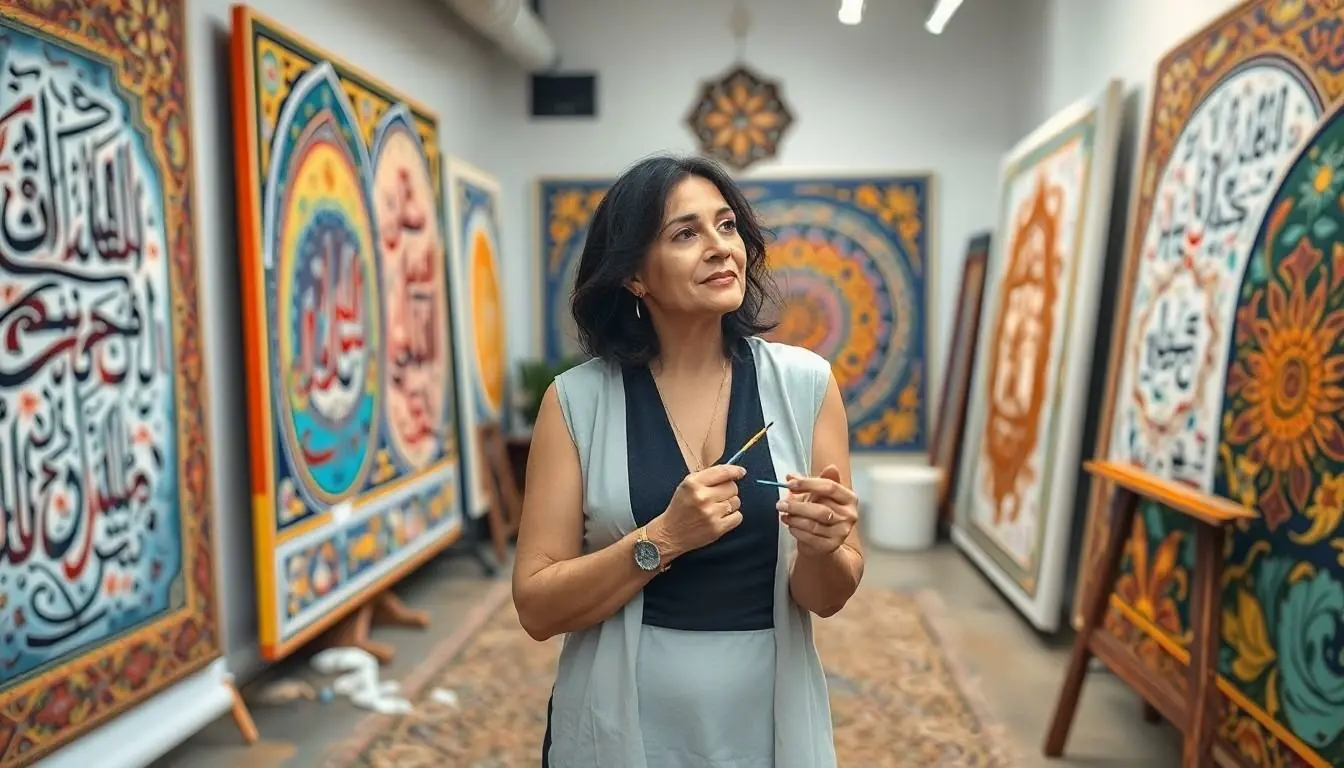Table of Contents
ToggleIn a world where art often feels like a competition for the most outrageous, modern Islamic art emerges as a refreshing breath of creativity. It blends tradition with contemporary flair, challenging perceptions and inviting viewers to rethink the boundaries of expression. Forget what you think you know; this isn’t just about intricate calligraphy and geometric patterns anymore.
Overview of Modern Islamic Art
Modern Islamic art reflects a rich tapestry of tradition and innovation. This art form encompasses various mediums, such as painting, sculpture, and digital art. Artists often fuse historical motifs with contemporary themes, creating compelling works that resonate globally.
Influenced by a diverse range of cultures, modern Islamic artists draw inspiration from classical Islamic art while pushing boundaries. Islamic principles motivate much of their work, emphasizing spirituality and connection. Artists engage with social, political, and environmental issues, providing commentary through their art.
Increased visibility of modern Islamic art in galleries, exhibitions, and online platforms has contributed to a growing appreciation. Many artists prioritize community engagement, collaborating with local and international creatives. They explore themes like identity, migration, and faith, offering fresh perspectives on the Islamic experience.
Notable examples of modern Islamic art include the works of Shirin Neshat and Youssef Nabil. Their art challenges norms, inviting discussions around culture and societal change. Emerging artists gain recognition, showcasing diverse expressions that challenge stereotypes and expand the viewer’s understanding.
The global art market increasingly supports this genre, promoting fair representation and visibility. Collectors recognize the importance of investing in works that reflect contemporary Islamic voices. Art institutions and organizations continue to support initiatives that highlight these artists and their contributions.
Modern Islamic art invites audiences to reflect on complex narratives. It encourages a dialogue that transcends borders, promoting understanding and appreciation for the richness of Islamic culture.
Key Characteristics of Modern Islamic Art

Modern Islamic art incorporates distinct characteristics that merge tradition with contemporary themes. This dynamic fusion illustrates the evolving nature of artistic expression within Islamic culture.
Use of Calligraphy
Calligraphy holds significant importance in modern Islamic art, serving as a bridge between the past and present. Artists often infuse traditional scripts with innovative styles, transforming letters into visual narratives. Contemporary calligraphers like Hassan Massoudy utilize vibrant colors and bold compositions to captivate audiences. These modern interpretations challenge conventional forms, moving beyond mere representation to convey deeper meanings. In this way, calligraphy in modern Islamic art not only preserves heritage but also invites fresh explorations of identity and spirituality.
Influence of Geometric Patterns
Geometric patterns play a crucial role in the design aesthetic of modern Islamic art. Artists embrace these intricate designs, often reimagining them in innovative ways. The use of symmetry and repetition creates visually striking compositions that engage viewers. Contemporary artists like Zaha Hadid have redefined traditional geometric shapes, incorporating them into architectural structures and installations. Renowned for their precision, these patterns connect the viewer to the mathematical beauty of Islamic design. In modern works, geometric elements often symbolize unity and harmony, expressing broader themes relevant to contemporary society.
Prominent Modern Islamic Artists
Modern Islamic art features several noteworthy artists who contribute unique perspectives and styles to the genre. Their work showcases the intersection of tradition and contemporary expression.
Artist Profiles
Shirin Neshat, an Iranian artist, explores themes of gender and identity through photography and video installations. Youssef Nabil creates evocative photographic works that blend nostalgia with modern narratives. Hassan Massoudy, known for his calligraphy, merges traditional Arabic scripts with abstract forms, breathing new life into ancient practices. Zaha Hadid, recognized for architecture and design, incorporates geometric principles rooted in Islamic aesthetics into her innovative structures. Each artist reflects a commitment to redefining notions of culture while engaging audiences on multiple levels.
Artistic Contributions
Contributions from these artists reflect a deep engagement with social and political issues. Neshat’s works often provoke discussions on the complexities of womanhood in Muslim societies. Nabil’s photographs invite viewers to reflect on identity and memory, seamlessly intertwining personal and communal experiences. Massoudy’s calligraphy not only preserves tradition but also serves as a medium for contemporary dialogue. Hadid’s architectural designs challenge conventional boundaries, showcasing how modern techniques can embody historical significance. These contributions enrich the artistic landscape and foster greater appreciation for modern Islamic art.
Themes and Subject Matter in Modern Islamic Art
Modern Islamic art explores various themes that resonate deeply within contemporary society. Identity serves as a prominent focus, with artists addressing personal and collective experiences. Migration emerges as another vital subject, reflecting the complexities of movement and displacement. Faith frequently intertwines with these themes, allowing for rich, nuanced explorations of spirituality and belief systems.
Artists incorporate political issues into their works, providing commentary on social justice and human rights. Environmental concerns also find representation, as many creators highlight the urgent need for awareness and change. Forms of artistic expression vary widely, from photography and painting to digital installations and sculpture. These diverse mediums enable artists to communicate their messages effectively and engage audiences.
Calligraphy and geometric patterns maintain significance in modern Islamic art. Contemporary artists infuse traditional calligraphy with innovative techniques, offering fresh perspectives on age-old practices. Geometric designs, reimagined through modern lenses, symbolize a connection to cultural heritage while embracing contemporary aesthetics.
Cultural influences play a vital role in shaping the subject matter of modern Islamic art. Global interactions enrich artistic expression, as artists draw from varying cultural backgrounds. This fusion creates a dynamic dialogue that challenges conventional boundaries, encouraging conversations about identity, culture, and society.
Prominent figures like Shirin Neshat and Youssef Nabil exemplify how themes in modern Islamic art address pressing issues. Their works invite viewers to engage with complex narratives, furthering understanding of contemporary Islamic experience. Through these themes and subject matter, modern Islamic art continues to evolve, reflecting the rich tapestry of human life and culture.
The Role of Modern Islamic Art in Society
Modern Islamic art plays a crucial role in shaping contemporary cultural narratives. It engages with complex social issues, using diverse forms of expression to spark dialogue and reflection. Artists create works that address identity, migration, and faith, inviting audiences to connect with these essential themes on personal and communal levels.
Artists often bridge historical and contemporary elements. They incorporate traditional styles and motifs while addressing current global challenges. For example, Shirin Neshat’s photography explores gender dynamics within Islamic societies, prompting conversations about identity and representation. Youssef Nabil’s evocative photography highlights nostalgia, blending that with modern narratives to connect with viewers emotionally.
Community engagement is a priority for many modern Islamic artists. They strive to create art that resonates within their communities, fostering understanding and appreciation for cultural heritage. Initiatives in galleries and exhibitions often emphasize these connections, showcasing how art can serve as a tool for change.
Art institutions increasingly recognize the significance of modern Islamic art. Collectors also show growing interest, valuing pieces that reflect contemporary Islamic voices and perspectives. This support enables artists to further explore complex narratives, encouraging a deeper understanding of diverse cultural experiences.
Themes within modern Islamic art extend beyond aesthetics. Artists express thoughts on social justice, environmental issues, and political matters, using their platforms to advocate for change. The dynamic dialogue created by these works encourages audiences to reconsider preconceived notions about Islamic culture and its artistic expression.
This art form continues to evolve, remaining relevant in today’s society. Shaping perceptions, modern Islamic art fosters appreciation for cultural complexity and the rich tapestry of human experience across the globe.
Modern Islamic art stands as a vibrant testament to the fusion of tradition and contemporary expression. It invites audiences to engage with complex themes and narratives that reflect the realities of today’s world. This art form not only challenges preconceived notions but also fosters a deeper understanding of cultural identities.
As artists continue to redefine boundaries, their work resonates with global audiences, encouraging dialogue around pressing social issues. The growing appreciation for modern Islamic art underscores its importance in the contemporary art scene. By celebrating diverse voices and perspectives, this genre enriches the cultural landscape and highlights the interconnectedness of human experiences.






